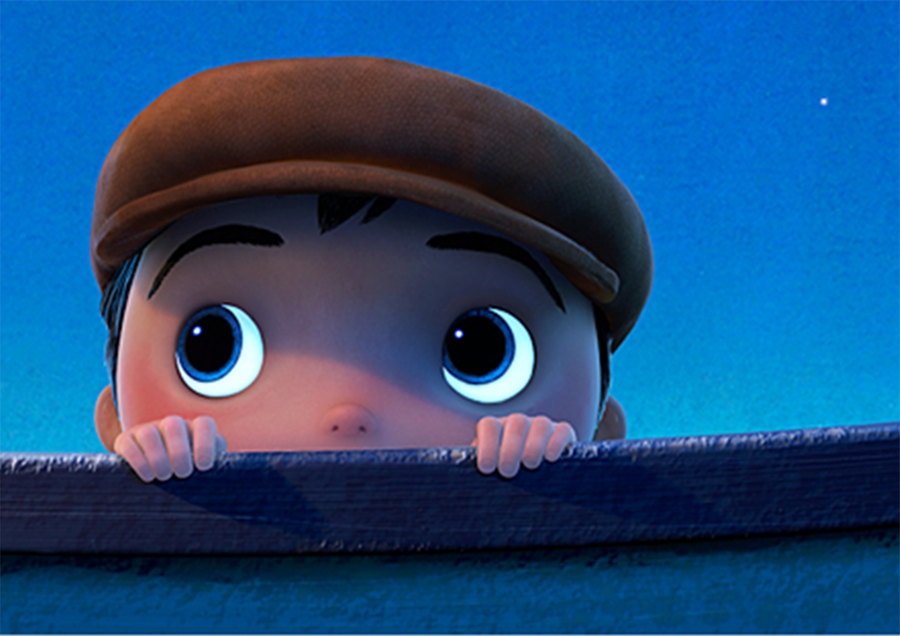
Upon the recent release of the 2015 Oscar nods this month, let’s look back at some previous winners: faces from our own youth, from a friend, or from a family member. Notice the power of laughter and love through a child’s eyes, and see how Pixar builds the magic of our childhood dreams into dreams that last a lifetime.
The older we get, we may not be as set in our ways as we seem. “Geri’s Game” won an Academy Award in 1997 for Best Animated Short Film after Pixar’s long stint away from animated shorts, which they put on hold for most of the ’90s to focus on developing feature films such as “Toy Story” and “A Bug’s Life.”
Geri made his film debut in “A Bug’s Life” in the first Pixar film to feature a human main character–and what a character he is! Set in an empty park in autumn, Geri plays a ruthless game of chess with his uncannily identical partner. As one partner seems to be near the edge of defeat, he artistically fakes a heart attack, swaps the board, and thus seizes the ability to win the game and the ultimate prize: a pair of dentures.
Geri is alone and playing himself all along, but yet we aren’t disheartened by his old age or of the antics of a cranky old man in a park. “Geri’s Game” lets us enjoy a solo hero who still has the ability to enjoy himself and his life, finding humor (and even camaraderie) in a pair of rusty teeth.

With constant comparisons to others, criticisms of individual personal defects, and a constant competitiveness that leads many to self-doubt, take the words instead of the mighty jackalope: “Doesn’t matter what color, being pink, purple, or heliotrope. Now sometimes you’re up and sometimes you’re down. When you find that you’re down, well, just look around. You still got a body, good legs, and fine feet. Get your head in the right place and hey, you’re complete.”
A story of “how strange life is with its changes,” Pixar helps us get a leg up and keep on boundin’ and reboundin’.
“La Luna” tells a timeless fable of a young boy coming of age in a most extraordinary circumstance.
Nominated for an Academy Award in 2011, “La Luna” presents the story of a tri-generational family business: sweeping, brushing, and creating the starry night that we see throughout our lives. They work by chipping away pieces of the moon–the visibility that we see as waxing and waning turns into an intricate, delicate process of love by this family.
Both older men’s eyes become shrouded by the signs of age, but with the younger boy’s curiosity and sense of wonder, they discover (or re-discover) the joy of living and the joy of their lives’ work. With a beautiful setting and an imaginative perspective of the age-old pie in the sky, “La Luna” asks us all to dream again and see the world not in efficiency or precision, but in the action of completing a task itself and receiving joy and recognition within.
“Where a city sings a song.” That’s where German director Saschka Unseld first imagined the concept behind “The Blue Umbrella,” a tale of unexpected forces that bring together two umbrellas in a bustling, photorealistic cityscape.
In an interview with VentureBeat, Saschka tells of his own initial concept for the production of the lonely umbrella, a discarded and forlorn character in the city as it tries to reunite with its owner. The umbrella feels the pains of unrequited love as it is cast aside, and it feels the desire that remains to feel still wanted.
The Pixar version, far brighter and more upbeat, shows a lighter example of the forces, whether fate or chance, that bring us together and tear us apart. “It’s not just the umbrellas coming to life when it rains,” Saschka says, “but the whole city comes to life. That was part of a coincidence of me exploring what story I wanted to tell.”
Pixar shorts, whether from an endearing sheep, a lost umbrella, or a plethora of characters that we have grown to love over the years, remind us to be a little bit more like Geri–to enjoy the short things in life–or a little more like the boy contemplating the mysteries of the moon. They drive us to imagine, inspire, and change.
Megan Ginise studies journalism and public relations at Fresno State. She currently serves as the Filmworks marketing intern.
